#laurent aïello
Photo
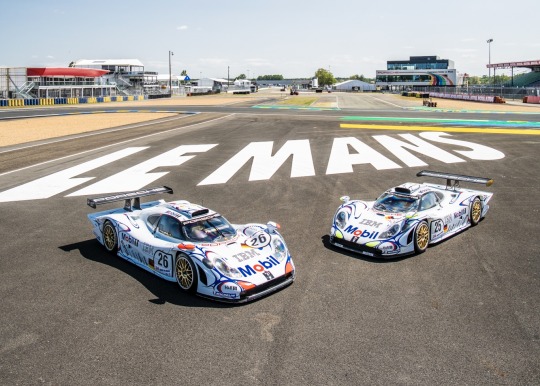

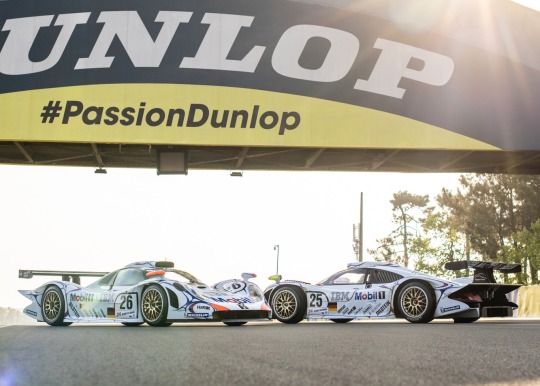


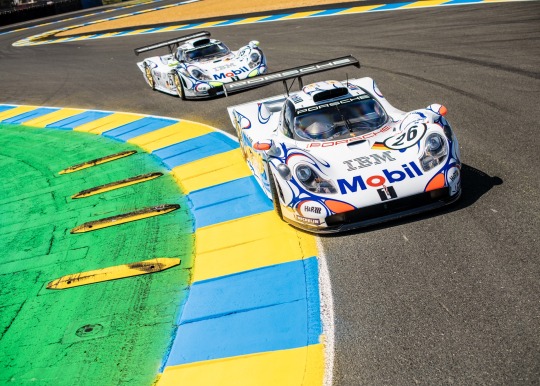

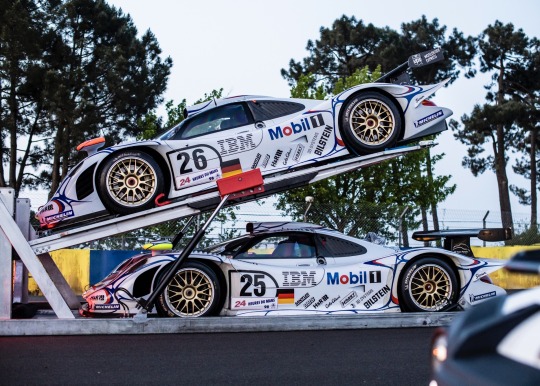
Les Porsche 911 GT1 '98, la 26,1er avec Laurent Aïello, Allan McNish & Stéphane Ortelliet, et la 25, 2éme avec örg Müller, Uwe Alzen & Bob Wollek aux 24 Heures du Mans 1998 📸 Rémi Dargegen Photography. - source Porsche Museum.
#porsche#24 heures du mans#laurent aïello#alan mcnish#stéphane ortelliet#örg müller#uwe alzen#bob wollek
107 notes
·
View notes
Text

#F.A.T. Ice Race Aspen#Porsche 911 GT1#Stéphane Ortelli#Le Mans#Colorado#USA#Laurent Aïello#Allan McNish#Museo Porsche#Zuffenhausen#GP Ice Race#Ferdinand Porsche#Ferry Porsche#Zell#Austria#Zell Am See#Tree Farm#Carbondale#Hotel Jerome
1 note
·
View note
Text

El Porsche 911 GT1 es un automóvil de carreras diseñado por el fabricante alemán Porsche para competir en la clase GT1 de deportivos, que también requería una versión de calle para fines de homologación. La versión de calle, producida en edición limitada, se llamó 911 GT1 Straßenversion (versión de calle). Aquí tienes toda la información existente sobre el Porsche 911 GT1:
- El 911 GT1 se presentó en 1996, como respuesta al McLaren F1 y al Ferrari F40, que dominaban la categoría GT1. Sin embargo, el 911 GT1 tenía muy poco en común con el 911 de la época, solo compartiendo los faros delanteros y traseros con el deportivo de producción. Su chasis frontal se basaba en el 911 (993), mientras que su subchasis trasero se derivaba del 962C, al igual que su motor bóxer de 6 cilindros biturbo de 3.2 litros, refrigerado por agua, que generaba unos 600 CV de potencia. El motor se montaba en posición central-trasera longitudinal, en lugar de la posición trasera habitual de los 911. El 911 GT1 debutó en las BPR Global GT Series (el predecesor del campeonato FIA) en las 4 horas de Brands Hatch, donde Hans-Joachim Stuck y Thierry Boutsen ganaron cómodamente. También ganaron en Spa y Ralf Kelleners y Emmanuel Collard triunfaron para el equipo oficial en Zhuhai. El 911 GT1 alcanzó una velocidad máxima de exactamente 330 km/h en la recta de Mulsanne durante los entrenamientos de las 24 Horas de Le Mans de 1996¹².
- En 1997, Porsche presentó una versión evolucionada del 911 GT1, llamada Evo, que tenía un aspecto más aerodinámico y una carrocería más ligera. El motor también se mejoró ligeramente, alcanzando unos 630 CV. El Evo dominó el campeonato FIA GT, ganando seis de las once carreras y logrando el título de constructores y pilotos con Stuck y Boutsen. Sin embargo, en las 24 Horas de Le Mans, el Evo sufrió varios problemas mecánicos y accidentes, y solo uno de los tres coches inscritos logró terminar la carrera, en el segundo puesto detrás del McLaren F1 GTR²³.
- En 1998, Porsche desarrolló una nueva versión del 911 GT1, llamada simplemente '98, que tenía un diseño completamente nuevo y más parecido al 911 (996) que se lanzaría ese mismo año. El motor se modificó para cumplir con las nuevas normas de la FIA, que limitaban la cilindrada a 3 litros y la potencia a unos 550 CV. El '98 también tenía un sistema antibloqueo de frenos (ABS) y un control de tracción (TC). El '98 se enfrentó a una dura competencia por parte del Mercedes-Benz CLK GTR y el Toyota GT-One, pero logró ganar las 24 Horas de Le Mans con Laurent Aïello, Allan McNish y Stéphane Ortelli al volante. Fue la última victoria de Porsche en Le Mans hasta el año 2015²⁴.
- Para poder homologar el 911 GT1 como un GT1, Porsche tuvo que producir un mínimo de 25 unidades para uso en carretera. Estas unidades se denominaron 911 GT1 Straßenversion y se vendieron a un precio de unos 900.000 dólares cada una. El Straßenversion tenía un aspecto similar al Evo de 1997, pero con algunos cambios para adaptarse a las normas legales, como faros elevados, parachoques más grandes, retrovisores exteriores más grandes, intermitentes naranjas y un alerón trasero fijo. El motor se redujo a unos 537 CV para mejorar la fiabilidad y el consumo. El Straßenversion podía acelerar de 0 a 100 km/h en unos 3.7 segundos y alcanzar una velocidad máxima de unos 310 km/h² .
2 notes
·
View notes
Photo

Audi Celebrates 20th Anniversary of First Le Mans Win
Twenty years ago, Audi’s R8 race cars crossed the finish line of the Le Mans 24 Hours race in 1-2-3 formation. The Vorsprung durch Technik brand’s sports car racing program ran for 18 years, during which time Audi won the epic endurance race 13 times – a 72 per cent success rate. We hear from Denmark’s Tom Kristensen, who won for Audi in 2000, 2001, 2002, 2004, 2005, 2008 and 2013, and celebrate the cars that beat the opposition, and the clock.
Tom Kristensen won Le Mans nine times. Here, he recalls Audi’s first victory in the famous 24-hour race in 2000.
‘I was invited by Doctor Wolfgang Ullrich, then Audi Head of Motorsport, to a meeting at Ingolstadt in autumn 1999. He introduced me to some of the Audi Sport engineers and mechanics, and showed me a drawing of the R8 race car. On the spot, I said I would like to be part of the team. We shook hands, and that was the best decision I ever made in racing.’
Victory first time out
‘I tested the car before the 12 Hours of Sebring in the US in March 2000. It was an interim car between the older R8R that Audi had raced in 1999 and the new R8. The front end was still the old car, while the rear was from the R8, but Frank Biela, Emanuele Pirro and I won Sebring in it, which was very important.’
A strong team and a level playing field
‘At Le Mans 2000 I drove with Biela and Pirro again, and we had two sister cars – one crewed by Laurent Aïello, Allan McNish and Stéphane Ortelli, the other by Christian Abt, Michele Alboreto and Rinaldo Capello. Dr Ullrich showed great commitment and passion, and he made sure that we all worked well together and shared all the feedback. He ensured we all had an equal chance and that there was never any additional support for one crew over another. Dr Ullrich always did his utmost to create a level playing field, and that was very motivating, not only for the drivers but also the mechanics and the engineers.’
Reliability was the number-one priority – and it paid off
‘Some people would say Audi took a conservative approach with the R8, certainly compared with some of the more state-of-the-art and – shall we say – ‘bananas’ race cars that followed. The philosophy was, “If there is any problem, we need to be able to fix it,” and that came all the way from board level down. The number-one priority was reliability. Without reliability, you cannot have 100 per cent trust in your equipment, and you cannot perform. It was the perfect approach for Le Mans.’
Finding one set-up to please three different drivers
‘The R8 was the first LMP1 Le Mans prototype I drove with power steering. I was used to heavy steering that took a real effort to turn into corners, which gave me a lot of confidence. It took me some time to get used to the lightness of the R8’s steering, whereas Frank Biela was very happy with it. He used to say, “It gives you quick hands, and you can control it faster.” But it took a long time to get the set-up right for everyone because the input from the drivers was different. Eventually, it became smoother and more progressive, and in the end we were all happy with it.’
A wild ride at Le Mans
‘We had a bit of an issue with the brakes – we had to change discs and pads. The car was very fast, but in that first year the twin-turbocharged V8 engine had a lot of turbo lag, followed by a very aggressive response. It was like a delayed time bomb – nothing, nothing, and then BOOM! That improved a lot the following year when Audi introduced the FSI system, which injected petrol directly into the combustion chambers. That was very helpful for the drivability of the engine, and it was also a lot more efficient and an excellent development for road cars. The first R8 had a lot of understeer, too. So, you had a car with a wild engine response that was set up to feel settled and more consistent as the tires wore, but as a result felt quite nervous and twitchy on fresh tires.’
Drop your guard for a split second and you're off
‘In an LMP1 car you are going at the speed of a small aircraft, and you are just trying to keep it nailed to the ground. You always have to be alert. The cars are very aggressive at the limit. If you are alone on the track, it’s fine, you can be calm. But in traffic, or in close fights with your rivals, you always have to look out for aerodynamic upset caused by the slipstream of other cars, which can buffet and bounce your car around. These things aren’t visible, but they can be pretty dramatic, and if you don't expect them, you can be sure you will go off when they arrive.’
It’s not over till the final minute
‘We were holding the lead towards the end of the 2000 race. Frank Biela was cool as ever – as long as you gave him time to have his cigarette. He was fit, he was strong, he was calm. Emanuele was always Italian – always emotional, you know? Ready to celebrate the victory before the end, which was something I hated. Maybe you would say my approach was pessimistic, but I didn’t want anything – no handshakes – before the checkered flag.’
Crossing the line 1-2-3
‘About 30 minutes before the end, Dr Ullrich froze the race order, and we were able to cross the line 1-2-3. And the colors of the cars were red, yellow and black, as in the colours of the German flag.’
The R8 went on to become the most successful LMP1 car ever
‘The Audi R8 won four more Le Mans, and I was part of the winning driving team each time. You could win in that car at Mont-Tremblant in Canada, at Mid-Ohio, at Sebring and Laguna Seca in the US, at Donington in the UK, at Jarama in Spain and at Le Mans in France. You could win in the R8 at so many different tracks all over the world.’
Photo L to R: Audi Head of Motorsport Dr. Wolfgang Ullrich, Emanuele Pirro, Tom Kristensen and Frank Biela on the podium.
3 notes
·
View notes
Photo

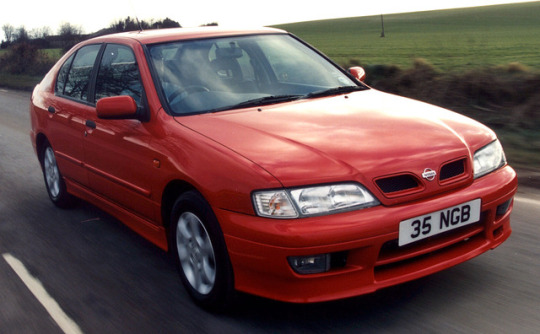
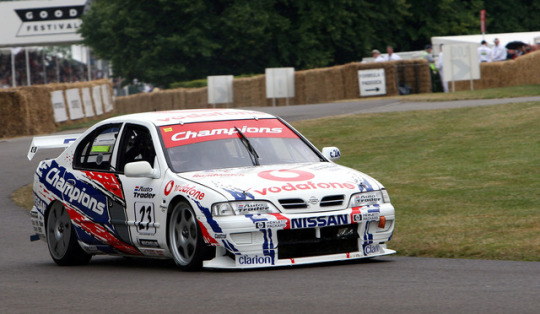
Nissan Primera GT, 1999. To celebrate the 20th anniversary of the annual Nismo Festival Nissan have used social media (Twitter and Instagram) to ask fans to vote for their favourite Nissan race cars of all time. The 1999 British Touring Car Champion (with Laurent Aïello) came 17th
71 notes
·
View notes
Text
The Last Time a Road Car Won Le Mans
The Last Time a Road Car Won Le Mans
Yesterday’s announcement that production-based hypercars could race at Le Mans in 2020 has us thinking about the last time a road car won the famous 24-hour race. It was 20 years ago, and the car was a Porsche 911 GT1 driven by Allan McNish (in his first of three Le Mans wins), Laurent Aïello, and Stéphane Ortelli. This, the 66th running of the 24 Hours of Le Mans, was the last year of GT1, a…
View On WordPress
#1998 le mans 24 hours#24 hours of le mans#911 gt1#car#gt1#Le#le mans#lmp1#Mans#porsche#porsche 911 gt1#Road#time#Won
0 notes
Photo
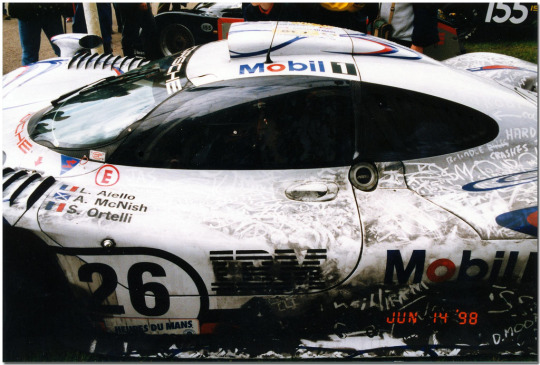
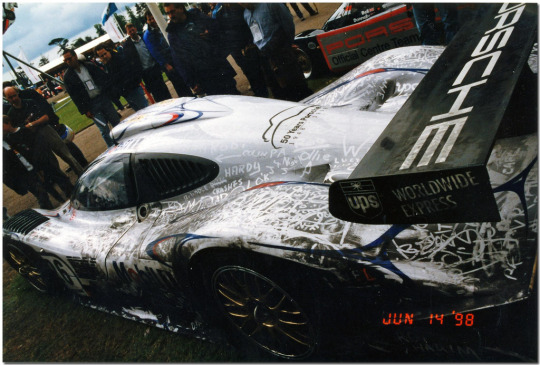
Porsche 911 GT1-98, Winner of Le Mans 1998
Image via AntsPhoto
130 notes
·
View notes
Photo
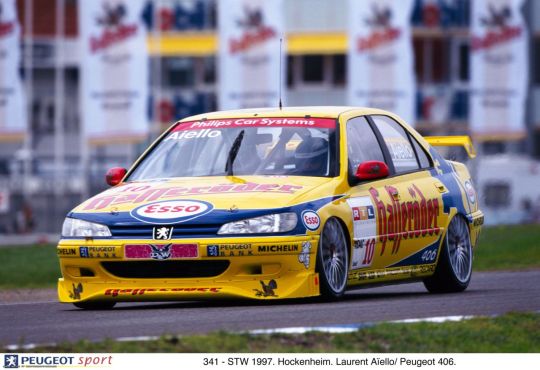
17 notes
·
View notes
Photo

Laurent Aïello, Allan McNish & Stéphane Ortelli - Porsche 911 GT1 '98 - vainqueurs des 24 Heures du Mans 1998. - source Porsche Museum.
71 notes
·
View notes
Text

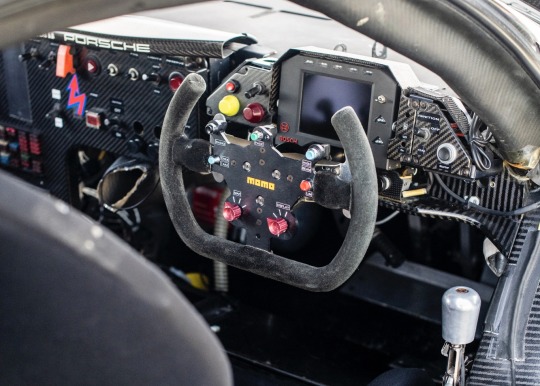



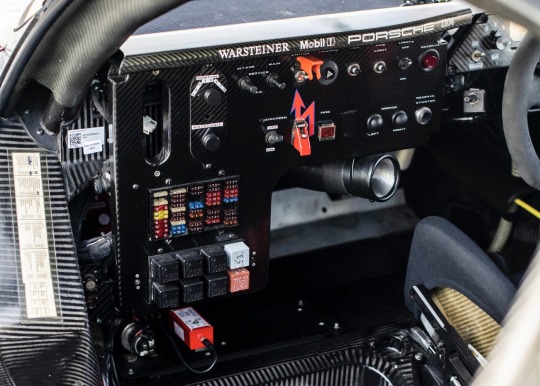
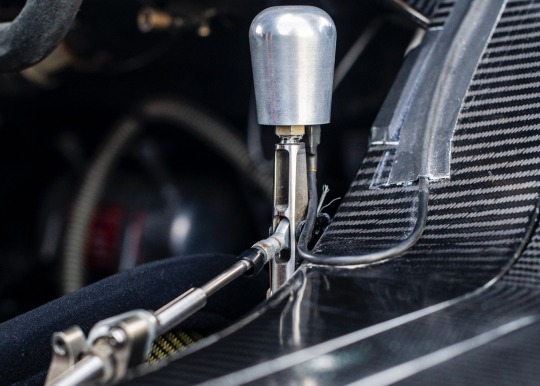


Cockpit de la Porsche 911 GT1 '98 de Laurent Aïello, Allan McNish et Stéphane Ortelli les vainqueurs des 24 heures du Mans 1998. Remi Dargegen. - source Porsche Museum.
38 notes
·
View notes
Photo
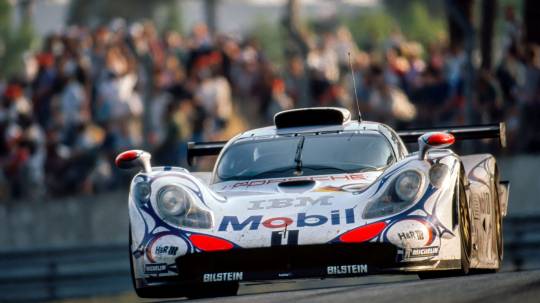
Allan McNish (Porsche 911 GT1-98 #003) vainqueur avec Laurent Aïello & Stéphane Ortelli des 24 Heures du Mans 1998. © DPPI. - source Carros e Pilotos.
29 notes
·
View notes